Given the diversity of art dealers, from different cities around the world and the sheer range of varying expressions they promote, it’s uncommon for art fairs to be themed. The ‘unbound’ curatorial theme attached to the 11th edition of the Investec Cape Town Art Fair (ICTAF), naturally, as its name suggests, eschews limits. It does not pertain to a specific aesthetic, or set of ideas. It brings to mind a kind of art or way of making art that unlocks thoughts buried deep in the psyche, not only for artists, but viewers.
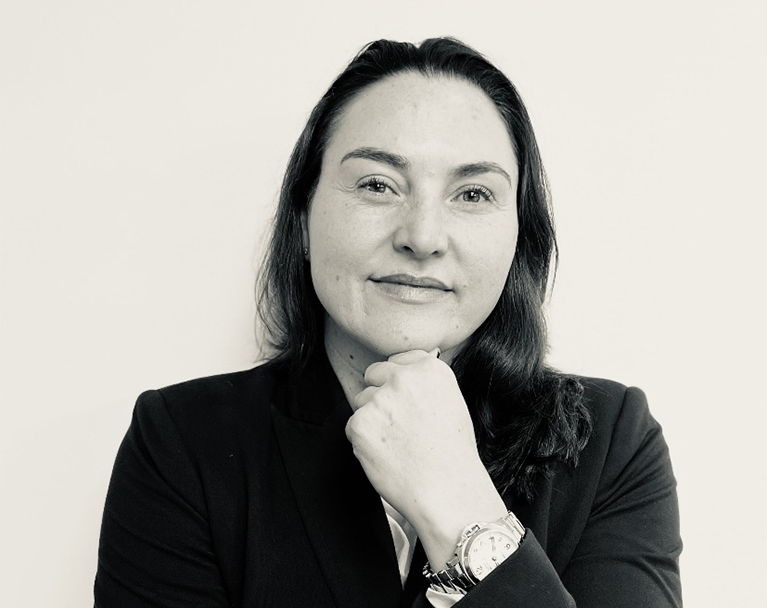
Unbounded can be interpreted as the experience of how art can liberate the mind, boundless imagination, and limitless potential. Art is a visual language that offers a universal connection.
The Solo booths at the fair will offer visitors a chance to immerse themselves in art from a range of African artists, who’ve used their artmaking to liberate their internal, or psychic worlds.
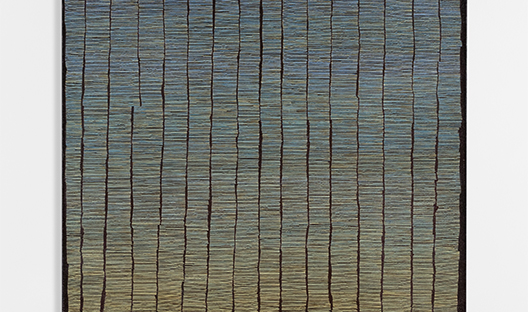
Pictured: Maja Marx, "The Shimmering Inbetween"
Dense mark-making frees the mind
In creating dense, almost uniform marks Maja Marx’s paintings (pictured) allow her to concentrate on the surface of her canvas with an “almost blinding nearness,” as she puts it. Unexpectedly, this level of concentration encourages her thoughts to flow freely – unbounded if you will.
“Contemplation and gesture merge into an overlay of conversations and memories, with the surface humming to a palimpsest of double-takes and reworkings of the stratified marks beneath,” observes Marx.
In her hands and through minute and calculated accumulation of marks, Marx generates what she terms a veil that functions as “an intermediary through which things are seen, or from which the visible shines”.
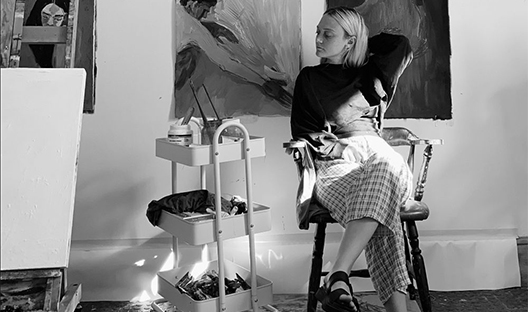
Pictured: Anico Mostert, Artist Portrait, "she_her"
Representing inner states of mind
Anico Mostert, represented by Ebony/Curated will also take up a booth in the Solo section of the art fair. On the surface, her work (pictured) is the antithesis of Marx’s as figurative painting is her mode of expression. Her subjects are not representations of specific people but rather embodiments of her inner state of mind or what she imagines her subjects might be feeling.
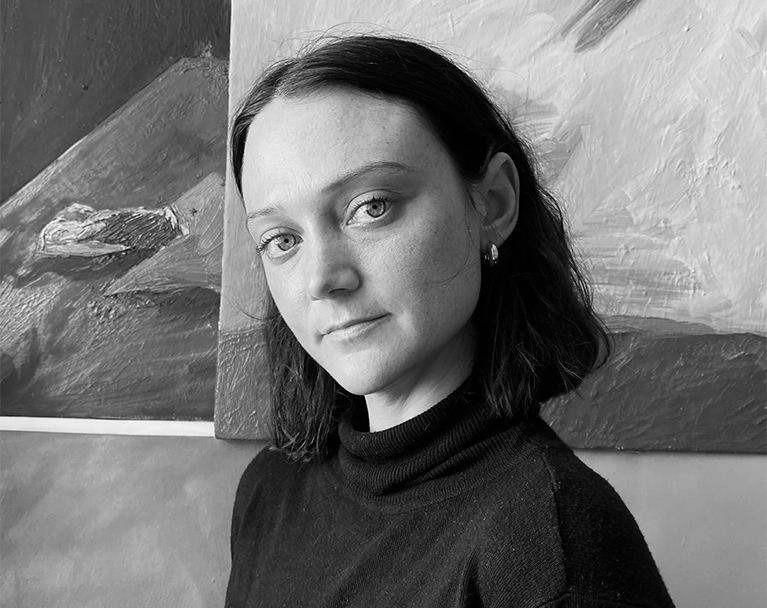
I intend to show their experience of particular moments, and when I paint them I try and imagine how they would feel about what they are experiencing. They are not trying to change their experience; they understand the importance of moving with whatever the moment brings. Their faces melt away because they're being absorbed by another figure or the environment.
The elongated bodies, and faces of her subjects, which have become a recognisable characteristic of her art, are intended to show how emotions transcend time – hence they are warped and stretched.
"I imagine them to be becoming what they are feeling. In that way, they can be a reflection of their own internal worlds,” commented Mostert.
As with Marx, in using her art to draw out, interpret and project her feelings onto an external, physical object, she can process overwhelming emotions that are not always easily resolved.
Looking beyond the self
Conversely, some artists draw from their external environments finding inspiration in their immediate surroundings and creating meaning from often chaotic or random events, and conditions.
The Iranian-born Kamyar Bineshtarigh, whose work will occupy a Southern Guild solo booth at the fair, is a good example of this approach. He took the Cape Town art scene by storm with ‘canvases’ derived from the walls of his studio, or that mimic the incidental marks left behind on walls in other spaces. In a recent exhibition at the Cape Town gallery he focussed on a panel beater shop and the marks generated over years on the walls.
The result was abstract works, with layers of different qualities of lines. Bineshtarigh stumbled on this approach by accident. He had been directly painting on fabric pinned to the wall of his studio. All of these marks seeped into the walls of his studio and it struck him they appeared like “abstract paintings,” he recalled.
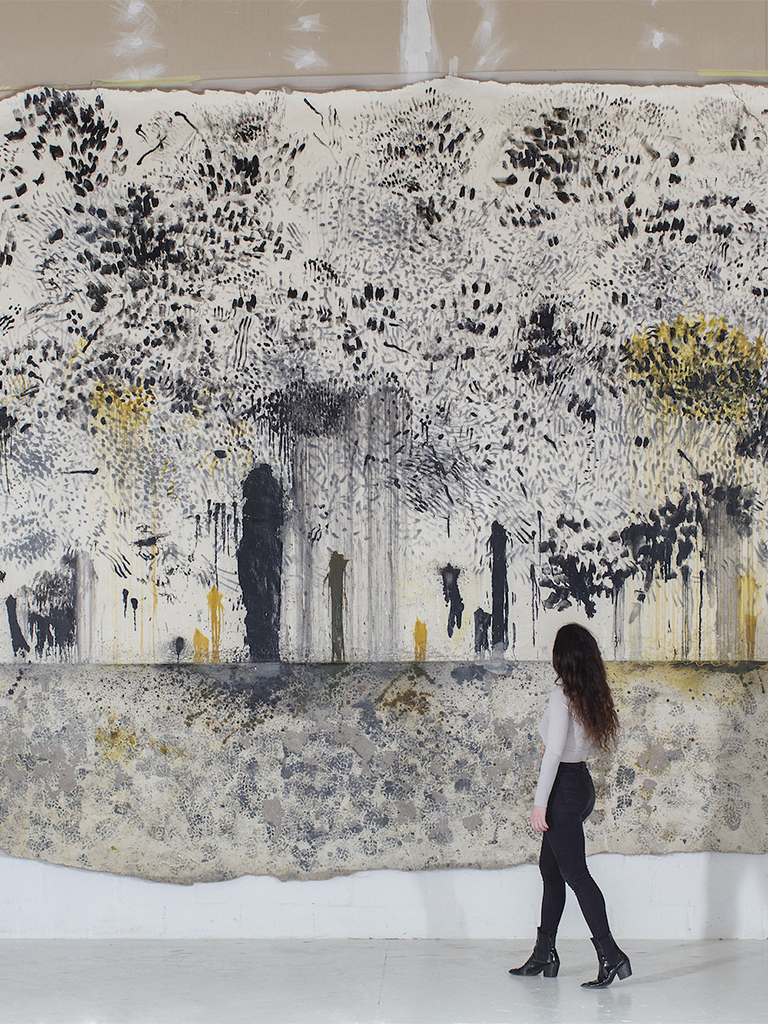
Pictured: Kamyar Bineshtari, "Studio Wall"
He also enjoyed how they encapsulated, time, and multiple voices (his own and others who also worked in the studio), embodied a history of a space, work itself and satisfied his rebellious nature.
“I always had this impulse as a child to directly paint on the wall. But I was almost always scared of doing things that would make my parents angry. So I think I repressed this desire to draw on the wall. It's very liberating,” observes Bineshtarigh.
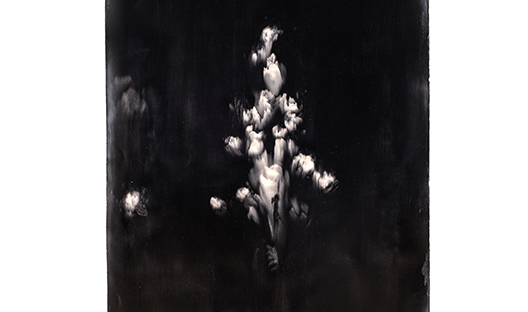
Pictured: Alexandra Karakashian, "Bloom III"
Processing archives
Two other artists also working in an abstract mode, who have captured the attention of Farrell are Belle Knemeyer and Alexandra Karakashian. Both will be showing at Reservoir booth at the fair.
Karakashian is known for bold monochromatic works that are created with engine oil and salt. The concepts motivating her work range from ecological degradation caused by exploiting natural resources and personal experiences – the Armenian genocide saw her family flee to Bulgaria and then Egypt before settling in South Africa. These themes are seemingly too ‘large’ to be contained or addressed in a single canvas, or perhaps even in a career. This speaks of a different kind of ‘unboundedness’ that artists channel.
“The transformative nature of her work, using black oil as a medium, captivates me, and knowing her enhances my connection with her practice,” says Farrell.
Farrell is equally captivated by Knemeyer’s chosen medium for her art. Farrell says, it’s the novelty of using everyday artifacts - allowing her to process large amounts of obsolete information, that is compelling.
“She takes old tax receipts, car manuals, till slips, and mulches them all together. She makes her pigments in yellows, blues, and reds. These have been tested and designed to last in most conditions and hold their original tones over time. Witnessing her ability to turn overlooked objects into striking artworks inspires me,” says Farrell.
Art’s worth lies beyond its rand value
Art’s investment value is often the focus of events sponsored by financial institutions, however, it also delivers on other less tangible, though equally compelling human needs. The unbounded theme brings this into focus.
In her art collecting, Farrell’s acquisitions are not guided by financial gain.
“A lot of my works are produced by new emerging artists and have no value on the secondary market. A recent work I bought in Zimbabwe was of a winged horse, Pegasus. It was made entirely out of the student’s math homework. The student used what materials and resources he had available to him. I suppose everyone can appreciate art but not everyone can create art,” she concludes.
Receive Focus insights straight to your inbox

